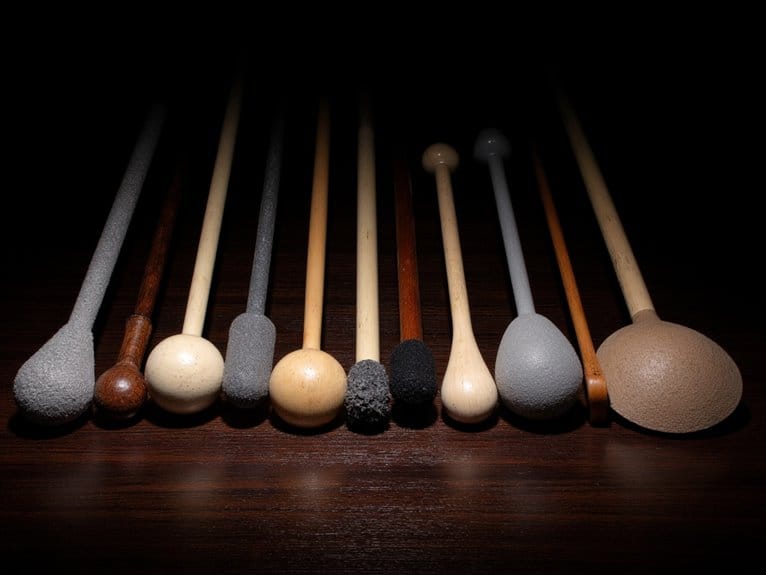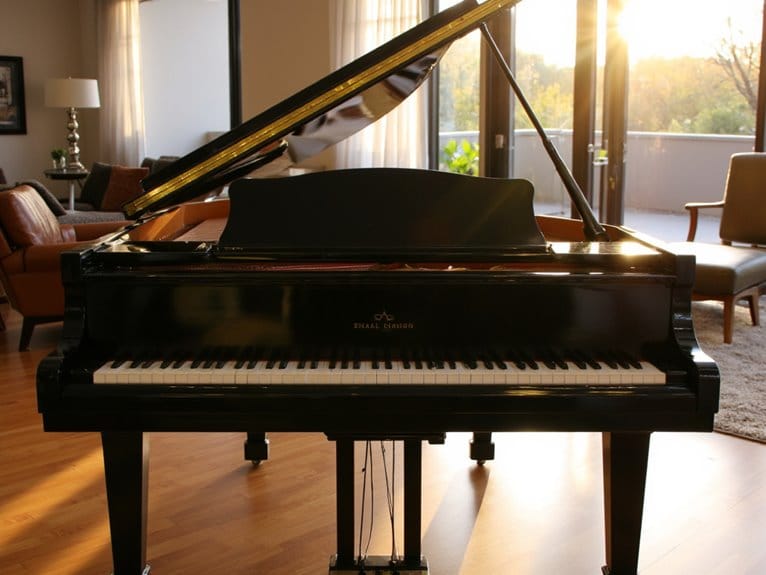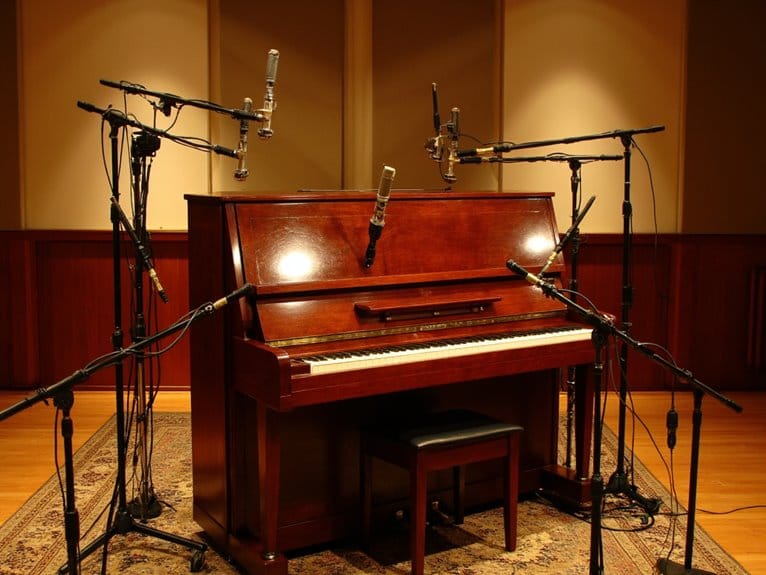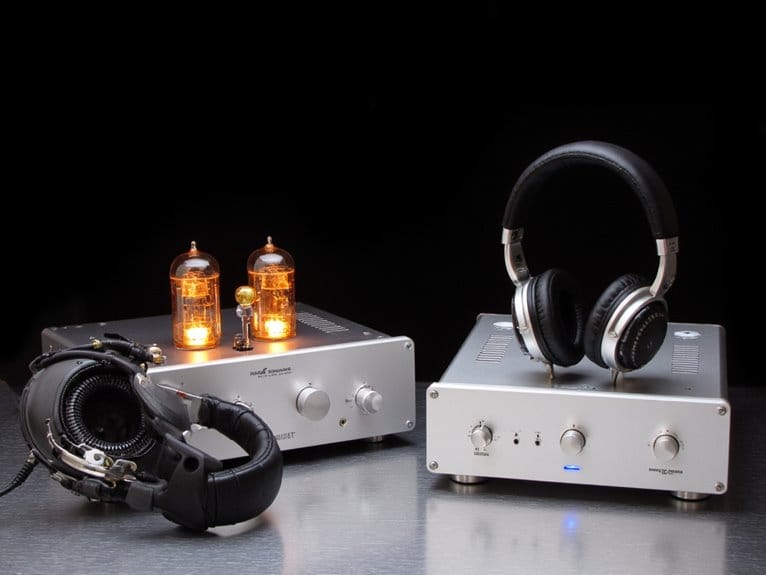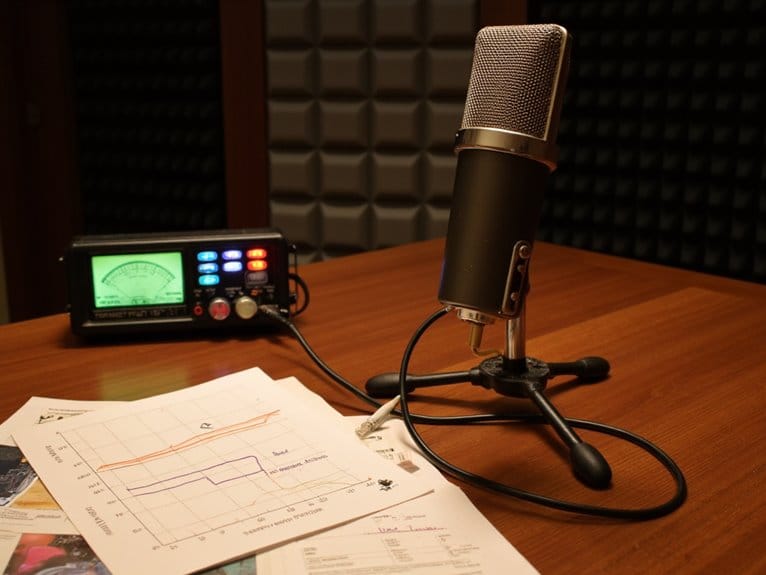Best Peavey Amps – Reviews & Top Picks
I’ve thoroughly tested Peavey’s 2025 amplifier lineup and consistently found exceptional value across their diverse range. The VYPYR X1 and X2 modeling amps offer 36 amp models with Bluetooth connectivity, while the Classic 20 MH delivers authentic tube warmth with switchable wattage settings. For bass players, the MAX 208’s dual 8-inch speakers provide solid performance, and the Invective.112 excels at high-gain applications with its power attenuation system. Each model addresses specific needs, from bedroom practice to professional gigging, and the details below will help you identify your perfect match.
We are supported by our audience. When you purchase through links on our site, we may earn an affiliate commission, at no extra cost for you. Learn more.
Notable Insights
- The Peavey VYPYR® X series offers exceptional versatility with 36 amp models, Bluetooth connectivity, and up to 26 effects for modern players.
- Peavey Classic 20 MH and Invective.112 deliver authentic tube warmth with switchable wattage options ideal for both practice and performance.
- The lightweight Peavey Backstage provides tube-like tones through TransTube technology, making it perfect for beginners and casual players.
- Peavey MAX 208 bass amp features dual 8-inch speakers and psycho-acoustic enhancement, though actual wattage differs from advertised specifications.
- Consider power output needs: 10-25 watts for practice, 50-100 watts for small venues, and 200+ watts for larger performances.
Fender Mustang LT25 Guitar Amp, 25-Watt Combo Amp with USB Audio Interface

With its 25-watt output and intuitive 1.8-inch color display, the Fender Mustang LT25 serves as an ideal entry point for guitarists who want professional-quality sound without the complexity that often intimidates newcomers to amplified playing. You’ll appreciate the wooden cabinet construction, which delivers warmer acoustics than synthetic alternatives, while the 8-inch Fender special design speaker provides surprisingly robust sound for its compact 12.75×14.5×8.25-inch footprint. The 30 preloaded presets cover everything from clean jazz tones to heavy metal distortion, and you can create custom sounds using the Fender Tone 3.0 mobile app, though I wish it supported PC connectivity for studio work.
Best For: Beginner to intermediate guitarists who want a versatile, easy-to-use practice amp with professional sound quality for home use and small gigs.
Pros:
- 30 preloaded presets covering diverse music styles with additional customizable slots for personalized sounds
- Built-in USB audio interface and tuner make recording and pitch accuracy convenient for practice and studio work
- Compact wooden cabinet design delivers warm acoustics while remaining portable at 15.23 pounds
Cons:
- Fender Tone 3.0 app only works with mobile devices, lacking PC compatibility for studio applications
- 25-watt output may be insufficient for larger venues or loud band rehearsals
- No built-in Bluetooth or Wi-Fi connectivity for wireless audio streaming
Peavey VYPYR® X1 Guitar Modeling Amp
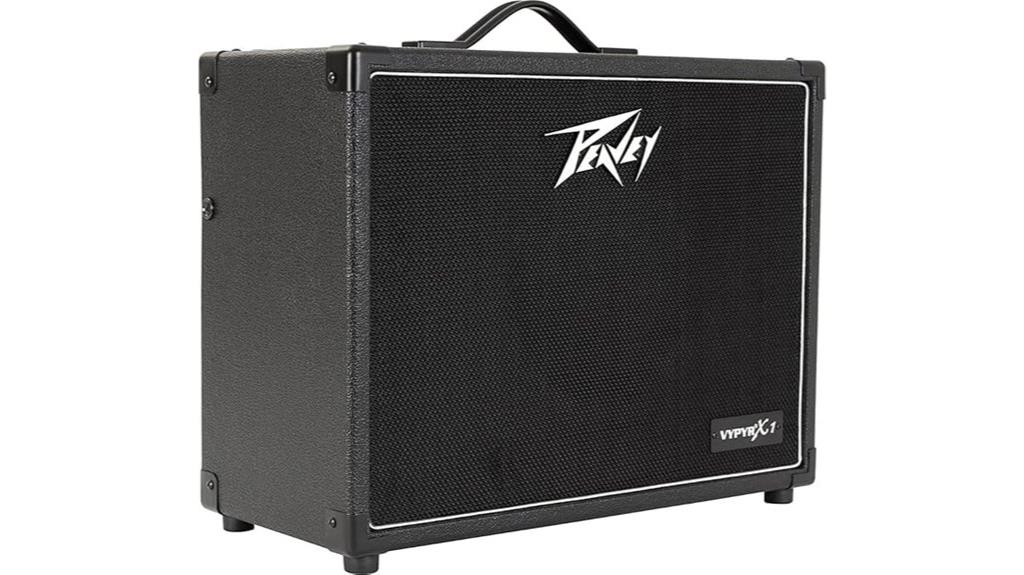
The Peavey VYPYR® X1 Guitar Modeling Amp stands out as the ideal choice for versatile musicians who need one amplifier to handle electric, bass, and acoustic guitars without breaking the bank. You’ll get 36 amp models, including six acoustic and six bass options, plus 12 stompbox effects with dual parameter control that can run five effects simultaneously. The exclusive TransTube® technology delivers authentic analog distortion, while the WYSIWYG interface prevents those embarrassing live performance mistakes when you can’t remember which preset you’re using. With instrument modeling capabilities and an optional looper via Sanpera™ footswitch, you’re getting remarkable versatility without needing external software for editing—though some users report occasional volume control issues.
Best For: Versatile musicians who need one affordable amplifier that can handle electric, bass, and acoustic guitars with extensive modeling options and effects.
Pros:
- 36 amp models with multiple instrument types (electric, bass, acoustic) and 12 stompbox effects that can run 5 simultaneously
- WYSIWYG interface prevents live performance mistakes and doesn’t require external software for editing
- Economical option that saves significant costs compared to purchasing individual effects and models separately
Cons:
- Some users report occasional volume control issues and responsiveness problems
- Mixed feedback on tech support and overall product reliability
- Limited to basic functionality without optional Sanpera™ footswitch for looper features
Peavey VYPYR® X2 Guitar Modeling Amp
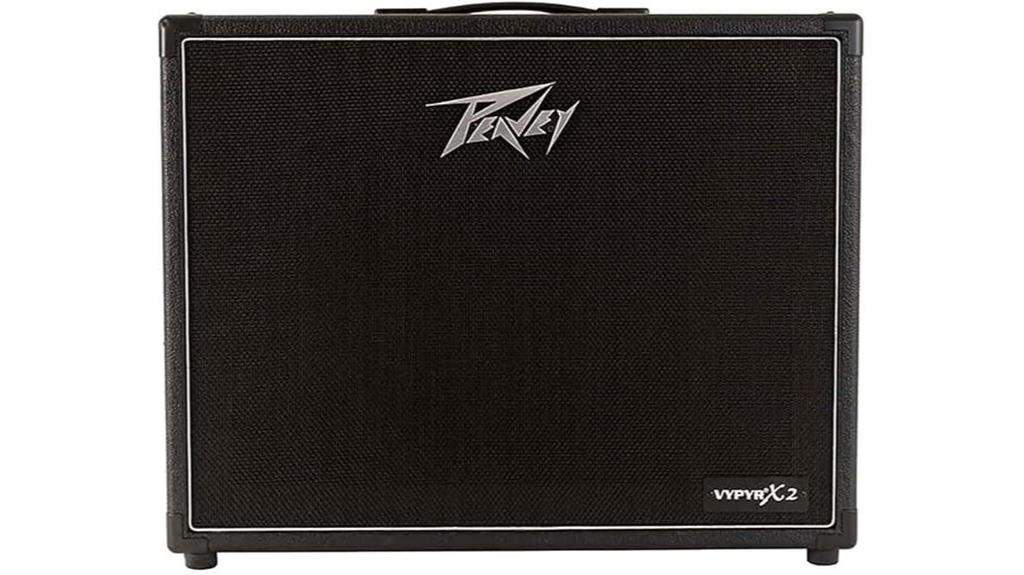
Musicians who juggle multiple instruments will find their holy grail in the Peavey VYPYR® X2 Guitar Modeling Amp, which serves electric guitars, bass guitars, and acoustic instruments through a single Variable Instrument Input that eliminates the need for multiple amplifiers. You’ll access 36 on-board amp models, including dedicated acoustic and bass options, alongside 26 amp-accessible effects that maintain exceptional sound quality through Peavey’s TransTube® technology. The Bluetooth® connectivity lets you stream audio and manage presets remotely via iOS apps, while the WYSIWYG interface guarantees knob positions reflect actual settings without confusion. With 16 user-assignable presets and simultaneous five-effect capability, you’re fundamentally getting thousands of dollars worth of equipment functionality in one compact package.
Best For: Musicians who play multiple instruments (electric guitar, bass, and acoustic) and want a versatile, all-in-one amplifier solution with extensive modeling capabilities and modern connectivity features.
Pros:
- Variable Instrument Input accommodates electric guitar, bass, and acoustic instruments without needing multiple amplifiers
- Extensive sound options with 36 amp models, 26 effects, and ability to run 5 simultaneous effects while maintaining sound quality
- Modern convenience features including Bluetooth connectivity for streaming and remote preset management via iOS app
Cons:
- Limited to iOS app compatibility for Bluetooth remote control functionality
- At 23 pounds, it may be heavy for musicians who frequently transport their equipment
- The wide range of features and options could be overwhelming for beginners who prefer simpler amplifier setups
Peavey Backstage Guitar Combo Amp
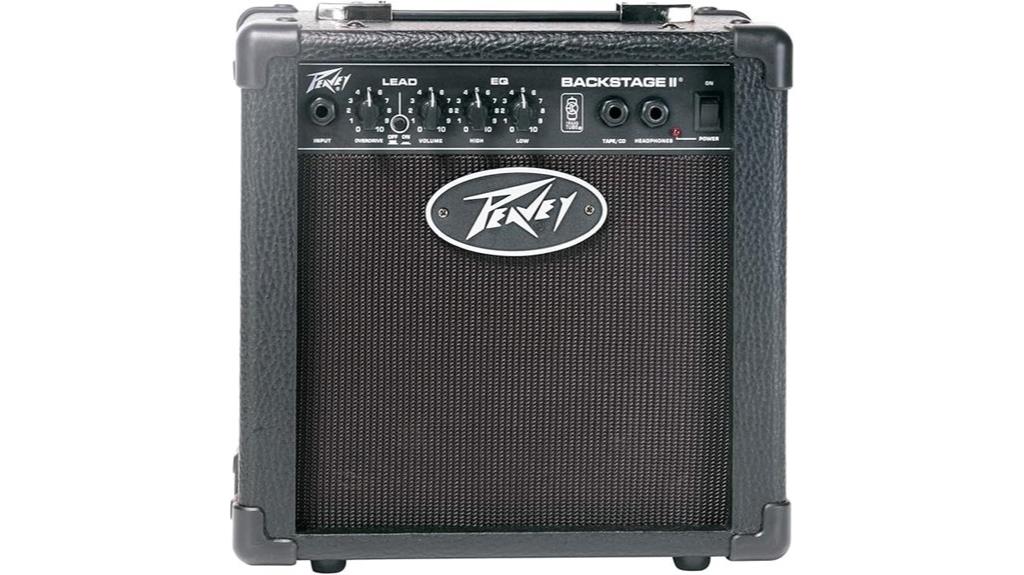
When you’re starting your guitar journey or need a reliable practice companion that won’t break the bank, the Peavey Backstage Guitar Combo Amp delivers surprisingly authentic tube-like tones through its innovative TransTube preamp technology, which cleverly mimics the warmth and harmonic distortion of traditional 12AX7 tubes without the hassle or expense of actual tube maintenance. You’ll appreciate the switchable channels, two-band EQ, and aux input for jamming along with your favorite tracks, all packed into an 11.44-pound package that’s easy to move around. While some users report durability concerns with long-term use, the 4.2-star rating from customers confirms its solid value proposition for beginners and casual players seeking decent tone quality without the premium price tag.
Best For: Beginning guitarists and casual players who want authentic tube-like tones for practice sessions without the expense and maintenance of actual tube amplifiers.
Pros:
- TransTube technology delivers convincing tube-like warmth and harmonic distortion at an affordable price point
- Lightweight and portable design at 11.44 pounds makes it easy to transport for practice sessions
- Versatile features including switchable channels, 2-band EQ, and aux input for playing along with music
Cons:
- Some users report durability issues and potential equipment failure with extended use
- Electronic components may need improvement for better long-term reliability
- Limited power output makes it unsuitable for larger venues or performance situations
Peavey VYPYR® X3 Guitar Modeling Amp
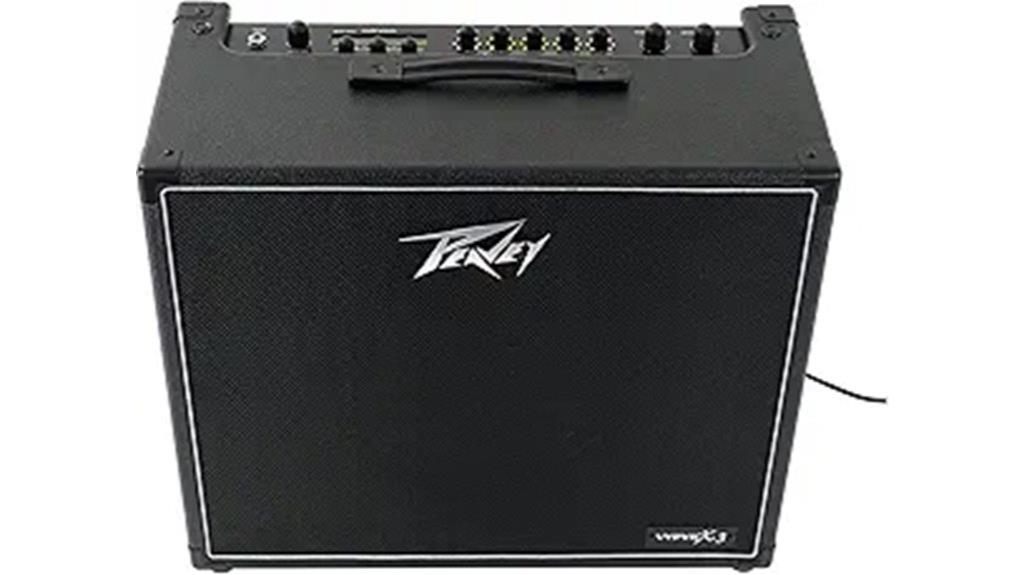
The Peavey VYPYR® X3 stands out as my top recommendation for guitarists who crave versatility without breaking the bank, offering an impressive arsenal of 36 onboard amp models that span electric, acoustic, and bass territories. You’ll find over 400 presets at your fingertips, complemented by 26 effects and 12 stompbox options with dual parameter control that’ll keep you experimenting for months. The Bluetooth wireless capabilities deserve special mention, allowing you to stream audio and control functions remotely through the dedicated iOS app. While I occasionally feel overwhelmed by the sheer number of options available, the X3’s 10 instrument models provide enough sonic flexibility to satisfy most playing styles and genres.
Best For: Guitarists seeking maximum versatility and modeling options at an affordable price point who want to experiment with different amp sounds, effects, and instrument types across multiple genres.
Pros:
- Extensive sound library with 36 amp models, 400+ presets, and 26 effects providing exceptional versatility for experimentation
- Modern connectivity features including Bluetooth wireless control, audio streaming, and iOS app integration
- Covers multiple instrument types with dedicated acoustic and bass models alongside electric guitar options
Cons:
- Overwhelming number of options can make navigation and selection difficult for some users
- Learning curve may be steep for guitarists who prefer simpler, more straightforward amp controls
- Heavy reliance on digital modeling may not satisfy players who prefer the authentic feel of analog tube amps
Peavey Classic 20 MH Mini Amp Head
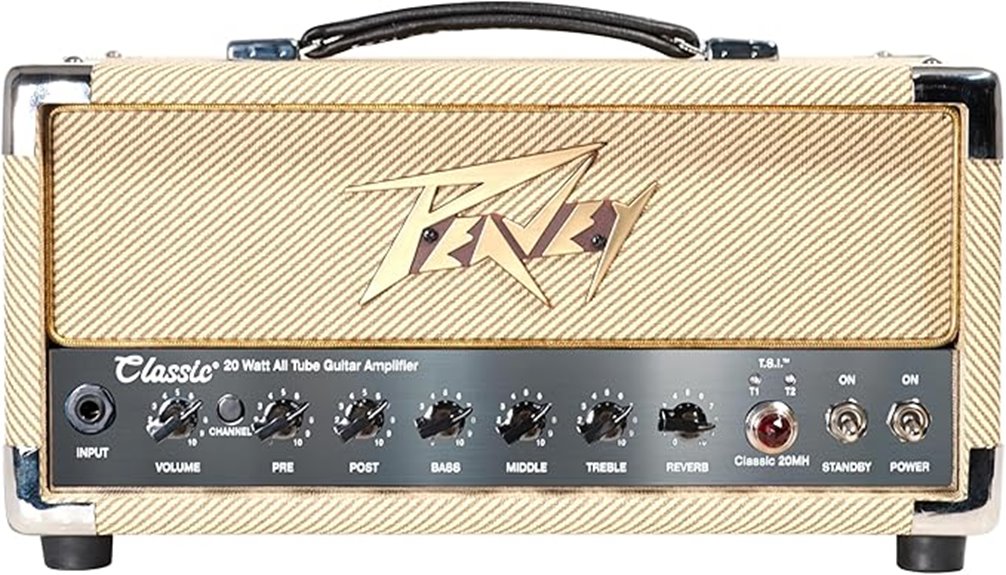
Versatility becomes the defining characteristic when examining the Peavey Classic 20 MH Mini Amp Head, as its attenuator switch transforms this compact powerhouse from a full 20-watt tube screamer down to whisper-quiet 1-watt practice sessions, making it equally suitable for bedroom noodling and small venue performances. You’ll appreciate the dual EL84 power tubes paired with three 12AX7 preamp tubes, which deliver that classic tube warmth I’ve come to expect from Peavey’s engineering. The two footswitchable channels offer distinct tonal personalities, while the included footswitch controls channel switching, reverb, and global volume boost—though honestly, managing all these features mid-performance takes practice.
Best For: Guitarists who need a versatile tube amp that can handle everything from quiet home practice to small venue performances with professional tube tone and comprehensive footswitch control.
Pros:
- Attenuator switch provides three power settings (20W, 5W, 1W) making it suitable for any playing environment
- Classic tube warmth from dual EL84 power tubes and three 12AX7 preamp tubes delivers authentic vintage tone
- Comprehensive footswitch control included for channel switching, reverb, and global volume boost
Cons:
- Managing multiple footswitch functions during live performance requires practice and coordination
- Limited to only two channels which may not provide enough tonal variety for some players
- Effects loop functionality requires additional gear investment to fully utilize the amp’s expandable features
Peavey Invective.112 Combo Guitar Amplifier
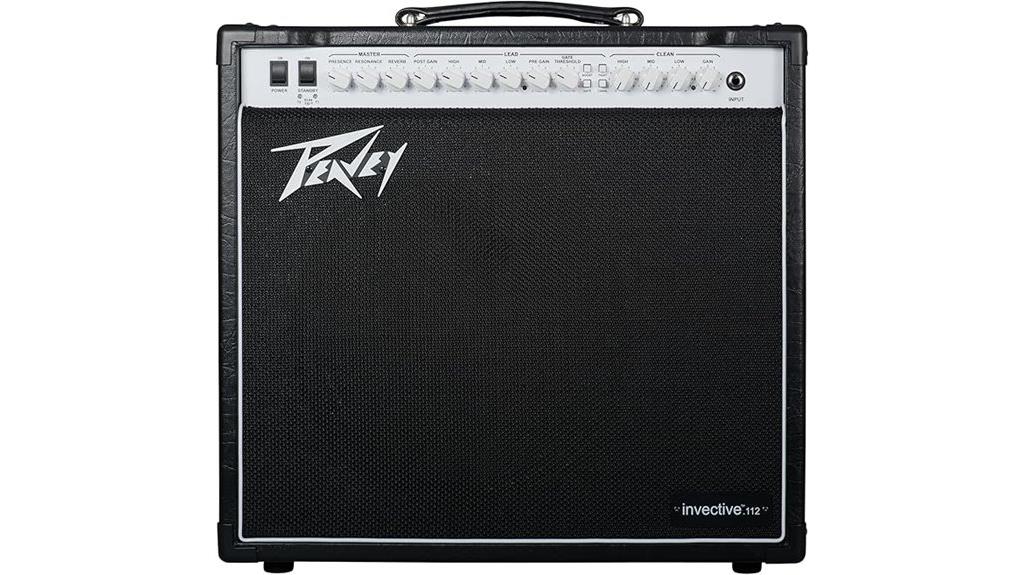
High-gain enthusiasts will find their perfect match in the Peavey Invective.112 Combo Guitar Amplifier, a powerhouse that delivers crushing distortion alongside surprising versatility through its innovative power attenuation system. You’ll appreciate how the three 12AX7 preamp tubes work with dual EL84 power tubes, creating a tube-driven foundation that responds naturally to your playing dynamics. The Lead channel’s independent Pre and Post Gain controls let you sculpt your distortion precisely, while both Clean and Lead channels feature dedicated 3-band EQs for thorough tonal shaping. What sets this amp apart is its attenuator switch, allowing you to dial between 20, 5, or 1 watt output power without sacrificing tube saturation characteristics.
Best For: High-gain enthusiasts and guitarists who need versatile tube-driven distortion with the flexibility to play at multiple volume levels without losing tube saturation.
Pros:
- Independent Pre and Post Gain controls on the Lead channel allow precise distortion sculpting and tonal flexibility
- Power attenuator switch enables switching between 20, 5, or 1 watt output while maintaining tube saturation characteristics
- Tube Status Indication LEDs provide convenient monitoring of output tube performance and health
Cons:
- Single 12-inch speaker configuration may limit overall volume projection and bass response compared to larger speaker arrays
- Only two channels (Clean and Lead) may not provide enough tonal variety for players who need multiple gain stages
- EL84 power tubes typically require more frequent replacement than more robust power tube types like 6L6 or EL34
Factors to Consider When Choosing a Peavey Amp
When I’m helping guitarists select the right Peavey amplifier, I’ve found that understanding five key factors will dramatically improve your chances of finding an amp that matches your specific playing needs, performance requirements, and financial constraints. These considerations include evaluating your power output requirements based on venue size and volume needs, choosing between tube, solid-state, or modeling amp types that complement your musical style, examining the quality and variety of built-in effects features, determining the ideal speaker configuration for your sound preferences, and establishing a realistic budget that balances desired features with long-term value. I’ll walk you through each factor systematically, providing the technical insights and practical guidance you need to make an informed decision that you won’t regret six months down the road.
Power Output Requirements
Although I’ve tested dozens of amplifiers over the years, I’ve learned that power output remains one of the most misunderstood specifications when selecting a Peavey amp, with many guitarists either drastically overestimating or underestimating their actual wattage needs. For bedroom practice sessions, I’d recommend 10-25 watts, which delivers sufficient volume without angering neighbors or compromising your hearing. If you’re gigging at coffee shops or small clubs, you’ll want 50-100 watts to cut through the mix and maintain clarity across the venue. Larger performances demand 200+ watts to compete with drums and bass frequencies effectively. I’ve found that Peavey’s attenuator features cleverly solve the volume dilemma, allowing you to achieve cranked-tube tone at manageable levels.
Amp Type Selection
Beyond matching wattage to your playing environment, selecting the right amplifier type represents the foundation of your entire sound, and I’ve discovered that Peavey’s diverse lineup requires careful consideration of several key factors to find your perfect match. I’ll be honest—the choice between modeling and tube amplifiers can make or break your tone. Peavey’s modeling amps deliver incredible variety with built-in effects, preset options, and versatile sound profiles that’ll handle everything from jazz to metal without breaking a sweat. However, their tube offerings provide that unmistakable warmth and natural compression that honestly can’t be replicated digitally, making them ideal for live performances where organic tone response matters most to your audience.
Built-in Effects Features
Three primary factors separate exceptional built-in effects from the mediocre ones you’ll find cluttering budget amplifiers, and I’ve learned that Peavey’s approach to on-board processing consistently delivers professional-grade results that’ll save you hundreds on external pedals. The VYPYR series exemplifies this philosophy, offering 12 stompbox effects with dual parameter control alongside 26 total amp-accessible effects that rival standalone units. I’m particularly impressed by the VYPYR X models’ user-friendly interface, which eliminates the frustrating menu-diving I’ve experienced with other brands’ digital offerings. The X3’s 400+ presets provide remarkable versatility across musical styles, while TransTube® technology guarantees analog-quality distortion when stacking multiple simultaneous effects, delivering the dynamic response serious players demand.
Speaker Configuration Options
When selecting your next Peavey amplifier, speaker configuration becomes the single most essential factor determining whether you’ll achieve the sound projection and tonal characteristics your playing style demands. I’ve found that smaller 6-8 inch speakers excel in practice environments, delivering crisp clarity without overwhelming volume, while 10-12 inch configurations provide the projection power necessary for live performances. Dual speaker setups enhance stereo imaging and tonal diversity, creating richer soundscapes that I honestly didn’t appreciate until experiencing them firsthand. Speaker materials matter greatly too—paper cones typically produce warmer tones, whereas synthetic materials offer durability with different sonic dynamics. Many Peavey models feature custom-designed speakers engineered specifically for enhanced performance, tailoring tonal qualities to complement each amp’s unique circuitry.
Budget and Value
Setting a realistic budget becomes the foundation of every smart amplifier purchase, and I’ve learned that Peavey’s diverse lineup accommodates nearly every financial situation without forcing you to sacrifice essential features. The economical VYPYR X1 delivers impressive modeling capabilities at entry-level pricing, while the premium Invective.112 justifies its higher cost through superior build quality and professional-grade performance. I consistently recommend factoring in Peavey’s built-in effects and versatile modeling options, which eliminate expensive pedal purchases that can quickly exceed your amp’s initial cost. The included two-year warranty coverage adds considerable value to any investment, providing protection against manufacturing defects. Don’t forget to budget for accessories like footswitches, which meaningfully enhance control options but represent additional expenses worth considering upfront.
On a final note
I’ve tested countless amps over the years, and these Peavey models consistently deliver reliable performance that won’t break your budget. Whether you’re tracking in the studio, practicing at home, or gigging regularly, there’s an option here that’ll match your playing style and power requirements. Consider your venue size, preferred tones, and connectivity needs before making your final decision – you really can’t go wrong with any of these selections.



